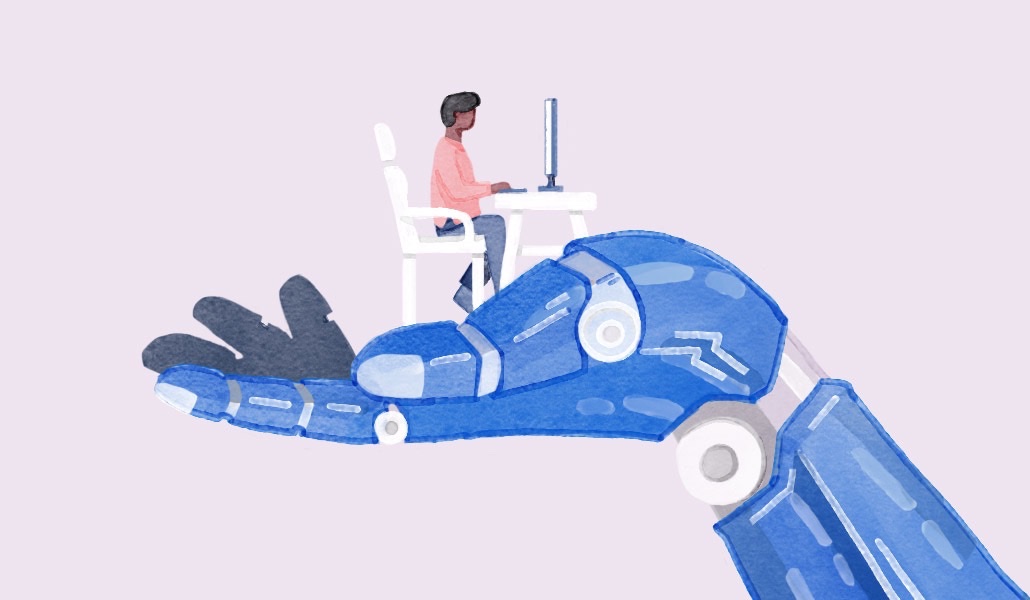How Microsoft is betting on AI to solve employee disengagement challenges

Microsoft is going all-in on building artificial intelligence into its workplace productivity products.
Today, Apr 20., the tech giant has announced its plans to integrate AI into its employee experience and engagement platform Microsoft in Viva, at its 2023 Viva digital summit. The new product, which will launch later this year, combines Microsoft’s AI assistant feature – Copilot – which launched last month. Copilot combines large language models with data within its Word, Excel, PowerPoint, Outlook and Teams products.
Microsoft has a long-term partnership with OpenAI, the company behind ChatGPT, to advance AI supercomputing, research and development. However, there is an AI race between Microsoft, Google and Amazon that has been ramping up all year.
“We’ve been focused on this as a key part of our strategy for quite some time, but obviously the technology has made significant advancements just in the last year,” said Seth Patton, general manager of Microsoft customer and employee experience solutions. “Some of the things that we’ve wanted to do for quite a while are now possible to do at scale and in a way that is unique for Microsoft because we can combine with our tools that people are using to do work.”
Alongside Copilot in the Microsoft Viva product, the company also announced Viva Glint, which captures employee feedback and translates it into action. The AI tool – due to launch in July – is designed to let leaders analyze their employee engagement data faster than they could before.
Microsoft has taken a firm stance on the benefits of flexible working over the last few years, having adopted a hybrid work model. However, general fear from senior leadership around staff productivity – dubbed “productivity paranoia,” by Microsoft – mixed with the widely publicized trend of employee disengagement, are ongoing challenges businesses are facing at a time of economic uncertainty.
By embedding AI into its workplace tools, Microsoft aims to help its clients improve both employee engagement and productivity, at scale. And in turn, unlock better business outcomes for organizations.
At today’s digital summit, the tech giant also unveiled the results of a major cross-industry research report, conducted with more than 3 million employees across more than 200 companies in 2022. The research revealed that high employee engagement correlates with stronger financial performance, something that is on the mind of a lot of leaders as economic uncertainty continues.
The research found that highly engaged employees focus on two things: they create clarity with intentional employee communication and goal setting, and they use data to continuously improve over time. It shows that employee engagement is a key part of the performance equation. To move the bottom line, you need a perfect mix of productivity and engagement. If you are more engaged in your work, you are more productive, and vice versa.
More and more companies have identified where they can use GPT-4 within their products to make it a better user experience that cuts down on time wasted at work. For example, Morgan Stanley enabled a GPT-4 internal chatbot that makes it easier for advisors to find answers to specific questions.
In Microsoft’s earlier 2023 Forrester State of Goal-Setting Report, 50% of employees stated that having more clarity around their goals gives them a greater sense of purpose and motivates them to work harder. However, offering this clarity continues to be a challenge with only 39% of employees understanding organization-level goals.
Other experts agree that implementing AI can help fight employee disengagement.
“By leveraging advanced algorithms and data analytics, AI tools can help managers to identify areas of opportunity, personalize training and coaching and make data-driven decisions,” said Rob Dance, CEO of technology consulting company ROCK. “By analyzing employee performance data, AI tools can identify areas where employees need to improve and provide personalized feedback and coaching to help them develop their skills and performance.”
Claire Trachet, CEO of leading business advisory, Trachet seconds this.
“While there has been rising fears of privacy concerns and layoffs as a result of how fast-paced the innovation of AI has been, the technology also holds a lot of potential in terms of boosting employee engagement,” said Trachet. “These tools have the ability to provide a space for anonymous employee feedback, conducting surveys and categorizing data in a simplified form. It also helps provide employees with more time to focus on tasks that require more attention by automating the more mundane parts of the job.”
When companies are able to sift through this data more efficiently with the help of AI, it can result in a better working environment where people’s feedback isn’t instead looked over.
How to use Copilot in Microsoft Viva
While the Microsoft 365 Copilot helped the employee directly with specific work tasks, Copilot in Microsoft Viva will give leaders an entirely new way to understand and engage with their workforce. Within Microsoft Viva, Copilot will be introduced to Viva Goals, Viva Engage, Viva Learning, Viva Topics, and Viva Answers.
In Viva Goals, the Copilot can simplify goal setting by guiding leaders through the process of creating objectives and key results as well as simplifying goal management across the organization. It can draft recommendations based on existing Word documents like annual business plans or product strategy papers. It can save employees time by summarizing the status of these plans, identify blockers and even suggest next steps.
“I use Viva Goals everyday to make sure that the work my team is doing is laddering up to my organization’s priorities and goals,” said Patton. “It’s a great tool, but it does take time to become proficient at creating a good objective and key result that has the right metrics. Having a coach to help me get it right and do it quickly will save us time. I already started using early prototypes of it and it’s magical.”
In Viva Engage, the Copilot helps leaders create posts from simple prompts or from trending topics within workplace communities. It can suggest personalized messages with options to adjust tone, length and even images.
“A lot of times I know I want to engage with my employees, but it’s that analysis paralysis for a moment,” said Patton. “Help me get started and I can take it from there. I’m really looking forward to it.”
With Viva Glint, the Copilot can summarize and analyze thousands of employee comments and provide leaders a fresh way to explore feedback by asking questions. It helps leaders accelerate and deepen organizational understanding by bringing together aggregated employee engagement data coupled with behavioral and collaboration data from Viva Insights and the Microsoft Graph.
“I used Glint today and if I’m spending two days reading through all the comments, trying to pattern match and understand what they are actually telling me, that’s time that I could actually be going and engaging with my employees and helping them be successful,” said Patton. “Being able to quickly summarize findings in a few minutes is going to save me tons of time. I don’t have a team of people doing that, it’s me.”
However, making sure that the AI is responsible is an extremely important part of the picture, especially when talking about employee feedback.
“We want to make sure it’s not just an afterthought, but really built into the design process,” said Patton. “That includes privacy, security, compliance reviews. Users are always in control to verify, edit, keep, discard. We purposely named it Copilot because it’s there to assist you, not to do your work for you.”
